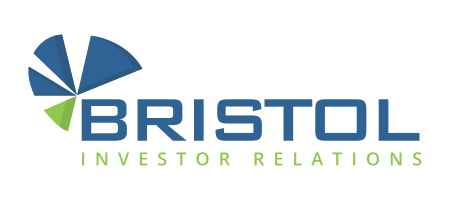The importance of press releases
The importance of press releases

Faced with an ever-changing media landscape, the humble press release has much competition today for dissemination of information for companies. While it is unlikely that the press release will disappear anytime soon, it continues to come up against other channels for distribution of news, updates and information. While many industry watchers predict the decline of the traditional press release in future years, for the time being for IR and for financial press purposes, it isn’t going anywhere anytime soon.
Press releases have always been a vital tool in the communications toolkit of an IR professional, however other social media channels are gaining in popularity for consuming company information and news. (read our previous article, Digital media and IR marketing strategy, to learn more) While hashtags and the use of 140 characters and less have been gaining traction in the financial community for several years, this medium of communicating corporate news, results and ideas is used by most companies today as a primary source to release news. In order to be read and capture an increasingly time deprived audience in today’s world, the format needs to be different, read: simpler, more to the point and quicker to digest.
Press releases can be written with various intentions. From the release of financial information, announcement of new products or services, changes in management and a host of other reasons, all have a different objective. Not all press releases are however created equally, and some have varying degrees of effectiveness when compared to others. Audiences remain aligned on the matter that any press release should contain information in easy to understand language, free of jargon, in as concise manner as possible. Press releases may be viewed by multiple audiences such as customers, stakeholders, investors and potential investors and the general public which is vital to consider when drafting a press release and the language used. No matter the audience, they want engaging and factual information that provides value to them in some way.
According to PR Newswire statistics, press releases that contain multimedia garner ten times the attention of plain text press releases. Using infographics and charts where possible and relaying the key messages in short and easy to digest points that follow a natural thought process make it easier for the reader to take in. The writer of any press release should remember the audience that he is writing for and that audience reading time is limited. Quotes from senior management or key opinion leaders are vital and can provide valuable insight or information to what has been written about. However, it should be warned that quotes shouldn’t provide any new information and just extend or expand on a subject already mentioned and back up a claim further. Upon distribution of the press release via email, choose a subject line that is punchy and sets the release apart from run of the mill emails. Be creative and to the point to create an email that people are curious and motivated to open and read in its entirety.
TOP TIPS FOR WRITING A GREAT PRESS RELEASE:
- Use simple, easy to understand language free of jargon.
- Be economical with use of words and try to make it short and to the point.
- Include where possible infographics, charts and graphs and bullet points.
- Know who your audience is and tailor your delivery to them and what they would expect to hear.
- Include one or two well placed quotes that can be picked up by the media to highlight the key topics of the press release. Also, the addition of analyst or key opinion leader findings add further weight to any claims made or results given.
- Get to the point quickly and outline key messages succinctly as readers time is limited.
- Try to put the most important information in the first few paragraphs and build storytelling into the mix – it’s easier for the reader to understand and keep engaged, understand and be relatable.
- Look at the news release as an executive summary of any newsworthy things that come out of the company – break into the value proposition, the benefits and any features and how senior management thinks this will impact the company and market.
From a regulatory point of view, The Securities and Exchange Commission in the United States confirms that companies can use social media platforms as a way to communicate material information beyond the press release, as long as investors have been alerted to the fact and which social media will be used to disseminate the information so that everyone is aware. The Canadian Securities Administration recognizes that information can be disseminated electronically and should be considered an extension of the corporate disclosure record, so in essence, the press release is still an important part of communication and can be supplemented with social media channels.
One should think of a press release as an important tool in telling a story and conveying news to a company’s various stakeholders. In today’s hyper competitive environment for a person’s time and attention, brings the need even more to draft a press release in a to the point, concise and easy to digest manner to ensure appropriate time is given to it by any reader. Social media has created a host of new communication channels for both readers and companies to gain and disseminate information and fundamentally has different ways to engage and educate its users. With this constant evolving and changing digital and communications landscape, press releases are still, and will continue to be, relevant for companies to use in their toolkit to communicate with the financial and broader stakeholder community.
Sources:
Muhammad Saleem, Copy Blogger
Andrew Holt, IR Magazine
PR 360
Fasken Martineau
Eddy Badrina- Buzz Shift
PR Newswire
